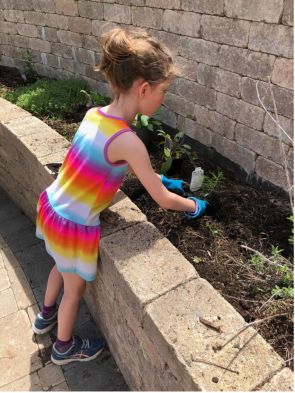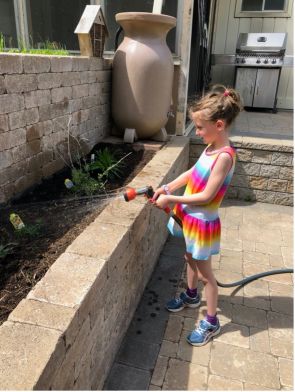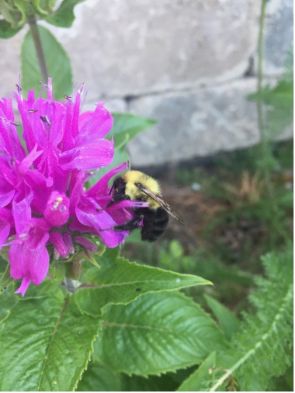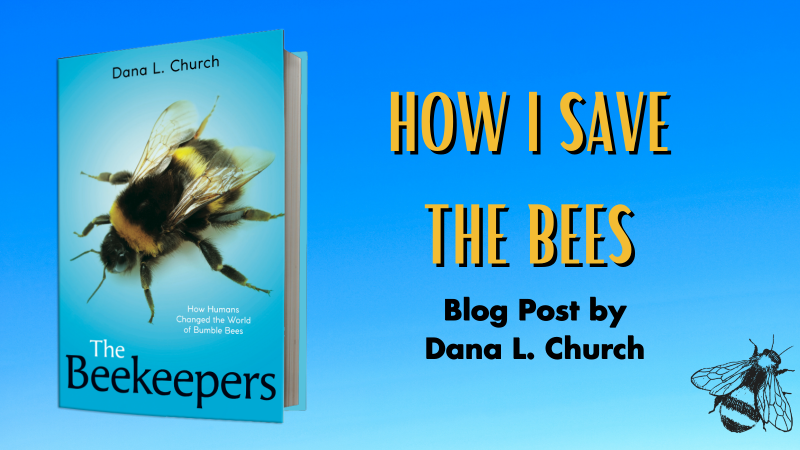To celebrate Earth Day, The Beekeepers author Dana L. Church, shares why it's so important to save the bees and how to do so. Read her essay below.
I have no beehives in my backyard. This may seem strange, because I love bees and I just wrote a whole book with Scholastic about bees called The Beekeepers: How Humans Changed the World of Bumble Bees. What I learned while writing my book is that the best way to help save the bees is to not put honey bee hives in your backyard.
Have you heard about disappearing honey bees? About fourteen years ago, news reports appeared about beehives that were suddenly empty. Where did all the honey bees go? The mysterious disappearance of honey bees has been called Colony Collapse Disorder. Scientists are still trying to understand why it happens.
Well, if honey bees are disappearing, then let’s save them by putting beehives wherever we can! Put them in backyards! Put them on city rooftops! I can understand why many people think this way. However, the chances of honey bees going extinct are quite low. What might go extinct, however, are wild bees. Writing The Beekeepers taught me that it’s wild bees we should be trying to save. They are disappearing very quickly. Much more quickly than honey bees.
Honey bees are pretty much livestock like chickens, pigs, and cows. Beekeepers and farmers raise them and manage them. In this way, honey bees are safe compared to wild bees, because someone is looking after them all the time and ensuring they are breeding and making more bees. Not wild bees: they don’t have anyone looking after them so closely. Instead, their habitat is being replaced by houses, roads, and food crops.
Putting beehives in backyards and on rooftops can cause big problems for wild bees. For one thing, these new honey bees will end up eating the nectar and pollen in the area where wild bees eat. There are thousands of honey bees in a honey bee hive, whereas families of wild bees are much smaller. One beehive in a backyard means thousands of honey bees are taking food away from wild bees. And, if flowers are scarce to begin with, wild bees will have a particularly hard time finding other food. Honey bees also sometimes carry diseases that can spread to wild bees. So, by putting more beehives out there, we might be unintentionally starving wild bees and making them sick.
While writing The Beekeepers, I learned there are better ways to save the bees. Like humans and all other animals, what wild bees desperately need is a safe home, lots of healthy food, and to be free of sickness and disease. We can provide all of this to wild bees.
Here is how I do it: each spring, my daughter, Lexi, and I plant a garden in our backyard. We don’t know much about gardening, and we don’t particularly like getting dirty, but we really want to help the bees. So, we go to our local gardening store and buy plants that make lots of nectar and pollen. We live in Canada, and the Canadian Wildlife Federation sells boxes of flowers at garden stores that are labelled bee-friendly to help make it easier for us to know what to plant. You can try looking for these types of flowers where you live, too. We also bought ourselves a pair of gardening gloves to help us not get so dirty.
My daughter, Lexi, planting bee-friendly plants in early spring.

Lexi watering our freshly planted, bee-friendly plants. Using the hose is one fun part about gardening.

Lexi and I are so excited each year when wild bees visit our flowers. We keep track of what flowers the bees seem to like best. And we also learned that getting dirty isn’t quite so bad.
A wild bumble bee on a flower in our garden. Isn’t she beautiful?

Our garden isn’t very big, but we realized it doesn’t have to be: with the right flowers, our little garden buzzes with all kinds of bees. The bees let us watch them if we don’t get too close and if we don’t breathe on them. (Bees don’t like the carbon dioxide that comes out of our mouth when we exhale.) Bees will only sting if they feel threatened, and besides, they are too busy slurping up nectar and gathering pollen to pay us much attention.
One of my favorite things to do is sit outside and listen to the hum of all the buzzing bees in our garden. It really makes my heart feel bigger knowing that Lexi and I have given them a safe space in our busy city.
A very important point about our garden: We NEVER use chemicals on our plants or on the grass in our backyard. We hope you won’t, either. Chemicals can make bees very sick.
Last spring Lexi and I planted some vegetables in our garden. Maybe you can try that, too. Bumble bees especially like tomato flowers.
One thing that Lexi and I are still learning about is what to plant so there will be something in bloom in our garden from early spring until fall. So far, all the flowers we have chosen bloom in the middle of summer. We want to provide food for the bees at other times, too. For now the dandelions we leave on our lawn will do.
So no, I don’t have beehives in my backyard. But I have a safe place for the wild bees who already live there. And you know what? You can give wild bees a safe place, too.



